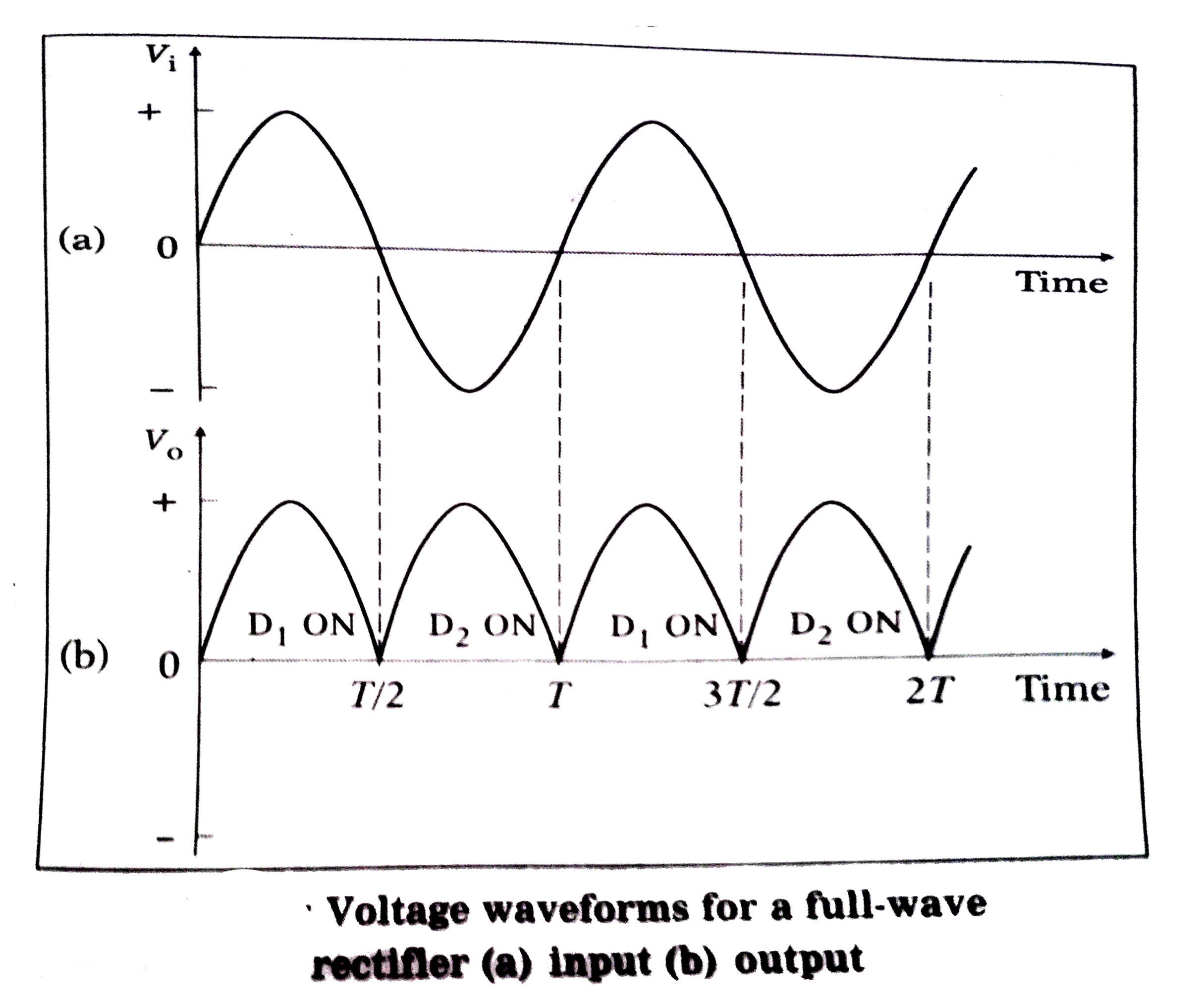Draw a circuit diagram of a full-wave rectifier. Explain its working principle. Draw the input/output wave forms indicating clearly the function of the two diode used.
Video Solution
Text Solution
Electric circuit : The alternating voltage to be rectified is applied across the primary coil (P1P2) of a transformer with a centretapped secondary coil (S1S2). The terminals S1and S2 of the secondary are connected to the p-regions of two junction diodes D1 and D2, respectively. The centre-tap T is connected to the ground. The load resistance RL is connected across the common n-regions and the ground.
(##NVT21_PHYXIIC11E03001_S01.png width=80%><br>nWork∈g:Afl–−waverectifierrectifies⊥hhalvesofeachcyc≤ofana<ernat∈gvo<a≥.<br>dur∈go≠halfcyc≤ofthe∈put,terminalS_(1)ofthesecondaryispositivewhi≤S_(2)is¬ativewithrespect→theground(thecentre−tapT).Dur∈gthishalfcyc≤,diodeD_(1)isforward−basedandconducts,whi≤diodeD_(2)isreversedbasedanddoes¬conduct.ThedirectionofcurrentI_(L)throughR_(L)is∈thesenseshown.<br>Dur∈gthe≠xthalfcyc≤ofthe∈putvo<a≥,S_(2)becomespositivewhi≤S_(1)becomes¬ativewithrespect→T.DiodeD_(2) now conducts sending the input. This is called full-wave rectification.
The output voltage has a fixed polarity but varies periodically with time between zero and maximum. Fig. 2 shows the input and output voltage waveforms.

|
Topper's Solved these Questions
- INSTRUMENTS : CONSTRUCTION AND WORKING Book:NAVNEET PUBLICATION - MAHARASHTRA BOARDChapter:INSTRUMENTS : CONSTRUCTION AND WORKING Exercise:Electrons and photons
Explore 1 Video
- EXPLANATION, CHARACTERISTICS AND PROPERTIES Book:NAVNEET PUBLICATION - MAHARASHTRA BOARDChapter:EXPLANATION, CHARACTERISTICS AND PROPERTIES Exercise:Assignments
Explore 2 Videos
- LAWS AND THEORIESBook:NAVNEET PUBLICATION - MAHARASHTRA BOARDChapter:LAWS AND THEORIESExercise:Assignments
Explore 2 Videos
Similar Questions
Knowledge Check
The output form of full-wave rectifier is
AAn AC voltageBA DC voltageCZeroDA pulsating unidirectional voltage
Draw circuit diagram for a full wave rectifier and show input output voltages.
View SolutionDraw the circuit diagram of half wave rectifier, showing input and output voltages.
View SolutionDraw a neat labelled circuit diagram of full wave rectifier using semiconductor diode.
View SolutionWhat is the output form of full-wave rectifier ?
View SolutionDraw the circuit diagram of transistor as an oscillator and explain its working.
View SolutionDrawa labelled diagram of a full-wave rectifier circuit and briefly explain its working, Show the input-output waveforms.
Or
A student wants to use two p-n junction diodes to convert a.c. into d.c. Draw the labelled circuit diagram she would use and explain how it works.
View SolutionDraw the output wave form across the resistor

View Solution

